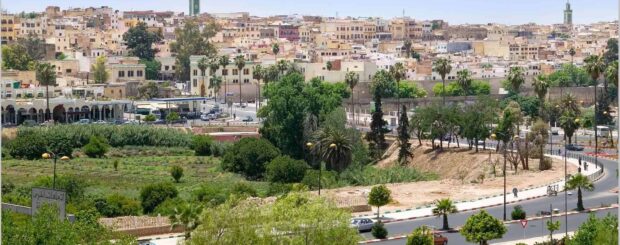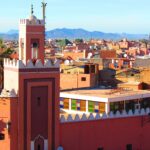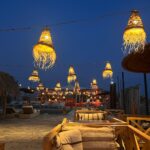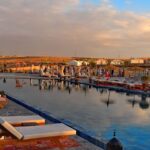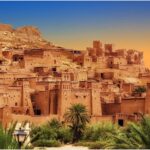Meknes Morocco and Volubilis
Like its neighbor Fez to the east, Meknes served as the capital of Morocco. During the long dynastic struggles of its Arabic and Berber leaders. The Imperial city of Meknes founded in the 11th century, and its surroundings have remained unchanged for centuries.
The imperial city of Meknes
A great system of triple walls encircles the city. Set within the walls are exquisite gates (“Bab” in Arabic). Considered among the best preserved in the Islamic world. Especially the Bab Mansour, widely considered the most beautiful gate in all of North Africa. Other highlights include the Dar El Makhzen royal palace and the Tomb of Moulay Ismail. The sultan is responsible for turning Meknes into a Royal City. An active shrine to which women flock from all over Morocco to ask for his blessing or baraka.

Meknes Morocco history
Meknes’s charm is enhanced still further by the beauty of the surrounding countryside. Not far from Meknes, the ancient Roman city of Volubilis is an unforgettable treat. Once the capital of the Roman province of Mauritania. The region was then known, and a thriving settlement until the 4th century. The ruins of Volubilis are near-perfectly preserved, providing a clear window into Roman urban planning and design.
The site was undisturbed for thousands of years until some of the marble was removed to build nearby Meknes. What remains are some of the most stunning Roman ruins outside of Rome. With exquisitely impressive mosaics preserved, literally where they were built.

The city of Moulay Idriss
Just beyond Volubilis lies the holy city of Moulay Idriss. Therefore, a small whitewashed town scenically nestled in a fold of the Rif Mountains. Named after the man who brought Islam to Morocco, Moulay Idriss was the great-grandson of the prophet Mohamed. He fled to Morocco in 787 and founded the first Arab dynasty, making this town his capital. Later, he founded nearby Fez, which would become the capital of his son Moulay Idriss II. Considered the holiest town in Morocco, Moulay Idriss was forbidden to non-Muslims until 1916.

